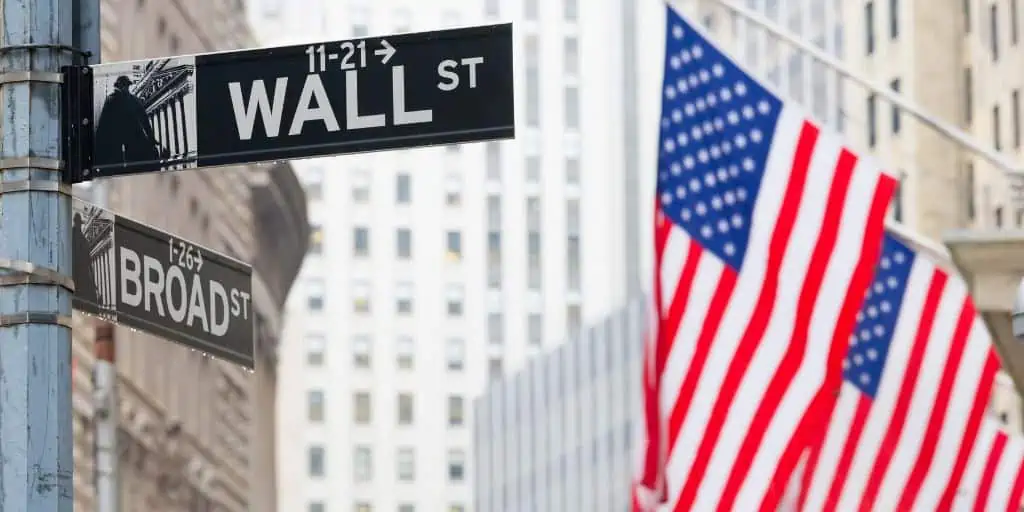What Is the Dodd-Frank Act?
REtipster does not provide legal advice. The information in this article can be impacted by many unique variables. Always consult with a qualified legal professional before taking action.
What Does the Dodd-Frank Act Do?
The Act was named after its two sponsors in the U.S. Congress—Sen. Christopher Dodd (D) and Rep. Barney Frank (D). The law prevents financial institutions from engaging in “excessive risk-taking,” which was seen as a major trigger of the 2008 U.S. financial crisis[1].
These excessively risky behaviors include allowing subprime mortgages, which made home loans accessible to borrowers with low credit scores who would typically not qualify for conventional mortgages. Subprime loans targeted subprime borrowers, came with high interest rates and a high risk of default[2], and were partly the cause of the Great Recession.
The Dodd-Frank Act directly addressed this behavior in its key provision, Title XIV. It states that “no creditor may make a mortgage loan without making a reasonable or good faith determination that the customer has the ability to repay the loan[3].”
The Dodd-Frank Act also required annual stress tests for certain financial institutions with assets of over $250 billion, placing them under the oversight of a federal financial regulatory agency. The tests check these institutions’ capacity to absorb losses due to severely adverse economic conditions[4].
This legislation made sweeping and impactful changes to the financial industry, such as[5]:
- Increased capital and liquidity.
- Regulation of derivatives.
- Reduction of short-term funding and counterparty exposure.
- Protection of financial consumers and investors from predatory lending.
- Prohibition on taxpayer-backed banks’ proprietary trading.
- Enhanced regulation and supervision of systemically important banks and nonbanks.
- Protection and rewards for whistleblowers.
Impact of the Dodd-Frank Act on Real Estate Financing
While the Dodd-Frank Act applies to all lenders, it has a special effect on real estate, particularly mortgage lenders and financing.
Title XIV of the Dodd-Frank Act practically prohibits mortgage lenders from originating mortgages for subprime borrowers who cannot realistically make mortgage payments. The law defines qualified mortgages as loans that have met the minimum standard of the borrower being able to repay.
Secondly, the Dodd-Frank Act requires that lenders who arrange a loan secured by property that the borrower will use as a residence must have a loan originator license. Therefore, real estate investors who use seller financing need to be licensed unless they meet the exceptions below[6]:
- The seller is not a corporation or a limited liability corporation (LLC).
- The seller did not construct the property itself (except for builders).
- The seller provides financing for only one property in a twelve-month period, hence the “one-property” exception.
- The seller owns the property to be sold.
- The loan is fully amortizing (no balloon payments).
- The loan has a fixed interest rate, or an adjustable interest rate after five years.
A seller and/or a loan that meets these exceptions is exempt from the Dodd-Frank Act’s “ability to repay” qualification.
However, for a lender who provides financing for up to three properties in a twelve-month period, the Act’s “ability to repay” rules apply. Only the license requirement as a loan originator may be waived[7].
There are no exceptions for third-party lenders. These rules discourage subprime mortgage packaging, where unregulated sellers and financial companies intentionally target borrowers with suboptimal credit ratings.
Key Points of the Dodd-Frank Act
The Dodd-Frank Wall Street Reform and Consumer Protection Act contains six major provisions[8].
1. The Volcker Rule
The Volcker Rule prevents speculative activities and profit-oriented proprietary trading among certain financial firms such as commercial banks. This rule limits investments of banks in hedge funds and private equity funds. It is designed to protect bank customers adversely affected by banks’ speculative investments that led to the 2008 financial crisis.

From Edmond J. Safra Center for Ethics, under Creative Commons 2.0; via Wikimedia Commons
The Volcker Rule is named after Paul Volcker, former chairman of the Federal Reserve.
2. The Consumer Financial Protection Bureau (CFPB)
The Dodd-Frank Act created the CFPB as an independent agency regulating the consumer finance markets. This agency, established within the Federal Reserve Board, covers issues on mortgages, credit cards, and student loans. The CFPB enforces consumer protection laws by supervising certain financial companies or writing new rules as needed.
The CFPB has broad oversight, with influence over credit ratings and credit rating agencies, mortgage lenders, and numerous players within the financial markets that had previously engaged in or cultivated predatory lending practices.
3. Capital and Liquidity
Dodd-Frank has set new Federal Reserve standards for capital. Major institutions like Bank of America and Citibank must have liquid capital of up to 9.5% of their assets. The liquid capital requirement includes cash, government bonds, or low-risk assets.
4. The Financial Stability Oversight Council
As part of the Dodd-Frank Act, this council was established as an interagency group consisting of the deputies and heads of the Treasury Department and independent financial regulatory bodies. The council’s functions include monitoring and mitigating emerging risks to the U.S. financial system that could derail the American economy.
5. Derivatives Regulations
The Dodd-Frank Act authorized the Securities Exchange Commission and the Commodities Futures Trading Commission to regulate the trading of over-the-counter derivatives. The Act also required firms trading in derivatives to use clearinghouses to reduce overall risk in the market. In turn, the clearinghouses must require collateral deposits and monitor the credit ratings of firms that trade derivatives.
6. FDIC Orderly Liquidation Authority
Finally, the Dodd-Frank Act granted the Federal Deposit Insurance Corporation (FDIC) “orderly liquidation authority.” This empowers the FDIC to wind down large, failing financial institutions in lieu of bankruptcy filing. These institutions are required under the Act to create living wills or plans detailing how they would manage their financial stability issues without affecting the broader financial system.
The FDIC may require companies unable to submit acceptable plans to break up into smaller financial institutions.
BY THE NUMBERS: With a total worth of about $4.85 trillion, the U.S. financial services industry contributes $1.5 trillion or 7.4% to the country’s GDP.
Source: Zippia
Criticisms of the Dodd-Frank Act
The Dodd-Frank Wall Street Reform and Consumer Protection Act is considered one of the most significant achievements of the Obama administration. However, it is also one of the least appreciated bills of the Obama presidency[9].
Criticisms of the Act include its perceived failure to address the continued dominance of financial industry giants Freddie Mac and Fannie Mae on the mortgage market. These two institutions were at the epicenter of the 2007/2008 financial crisis[10].
Critics of the Dodd-Frank Act also point out that the expansion of financial regulation may make U.S. firms less competitive than their foreign counterparts. In addition, smaller financial institutions and community banks, which played no major role in the financial crisis, have been observed to be unduly burdened by the Act’s regulations[11].
Takeaways
- The Dodd-Frank Wall Street Reform and Consumer Protection Act directly addresses the factors that triggered the 2008 U.S. financial crisis, also called the Great Recession.
- The Dodd-Frank Act has had a significant impact on real estate and the mortgage market, particularly on seller financing and subprime borrowers.
- Among other things, Dodd-Frank tightened regulations on financial institutions and their activities, such as issuing subprime mortgages.
- Other changes include prohibiting banks from proprietary trading and putting these institutions under federal oversight.
- While hailed as a landmark law of the Obama administration, the Dodd-Frank Act also has its share of criticisms, such as letting Fannie Mae and Freddie Mac off the hook, entities at the epicenter of the 2008 crisis.
Sources
- Smith, K.A. (2022.) How the Dodd-Frank Act Protects Your Money. Forbes Advisor. Retrieved from https://www.forbes.com/advisor/investing/dodd-frank-act/
- Kosakowski, P. (2021.) The Fall of the Market in the Fall of 2008. Investopedia. Retrieved from https://www.investopedia.com/articles/economics/09/subprime-market-2008.asp
- Legal Information Institute. (n.d.) Dodd-Frank: Title XIV – Mortgage Reform and Anti-Predatory Lending Act. www.law.cornell.edu. Retrieved from https://www.law.cornell.edu/wex/dodd-frank_title_XIV
- Federal Housing Finance Agency. (2021.) FHFA Announces Results of Fannie Mae and Freddie Mac Dodd-Frank Act Stress Tests. fhfa.gov. Retrieved from https://www.fhfa.gov/Media/PublicAffairs/Pages/FHFA-Announces-Results-of-Fannie-Mae-and-Freddie-Mac-Dodd-Frank-Act-Stress-Tests.aspx
- ComplianceCore. (2020.) 5 Major Provisions under the Dodd-Frank Act for Banks. compliancecore.com. Retrieved from https://compliancecore.com/blog-5-major-provisions-under-the-dodd-frank-act-for-banks/
- National Association of REALTORS®. (n.d.) Seller Financing: Impact of the Safe Act and the Dodd-Frank Act. Retrieved from https://www.nar.realtor/reports/seller-financing-impact-of-the-safe-act-and-the-dodd-frank-act
- Hancock, McGill & Bleau. (2020.) The Dodd-Frank Act and Its Impact on Financing Home Sales. Retrieved from https://hmbtx.com/the-dodd-frank-act-and-its-impact-on-financing-home-sales/
- Miller, S. (2019.) 6 Major Provisions of Dodd-Frank. Fin. Retrieved from https://fin.plaid.com/articles/major-provisions-of-the-wall-street-reform-and-consumer/
- Konczal, M. (2015.) Dodd-Frank turns 5 today — it’s Obama’s most underappreciated achievement. Vox. Retrieved from https://www.vox.com/2015/7/21/9004155/dodd-frank-explainer
- Reynolds Lewis, K. (2011.) The 5 Best and 5 Worst Regulations in Dodd-Frank. The Fiscal Times. Retrieved from https://www.thefiscaltimes.com/Articles/2011/07/19/The-5-Best-and-5-Worst-Regulations-in-Dodd-Frank
- Hayes, A. (2022.) Dodd-Frank Wall Street Reform and Consumer Protection Act. Investopedia. Retrieved from https://www.investopedia.com/terms/d/dodd-frank-financial-regulatory-reform-bill.asp




